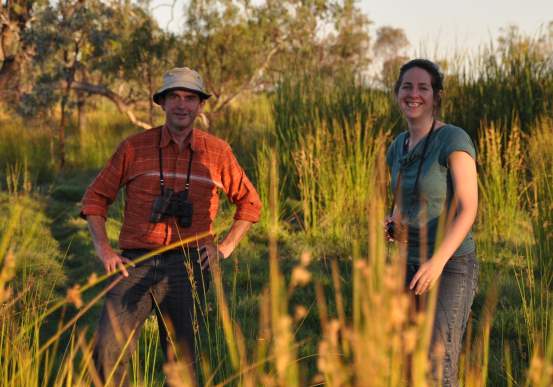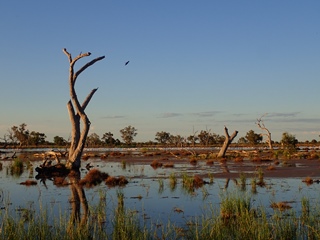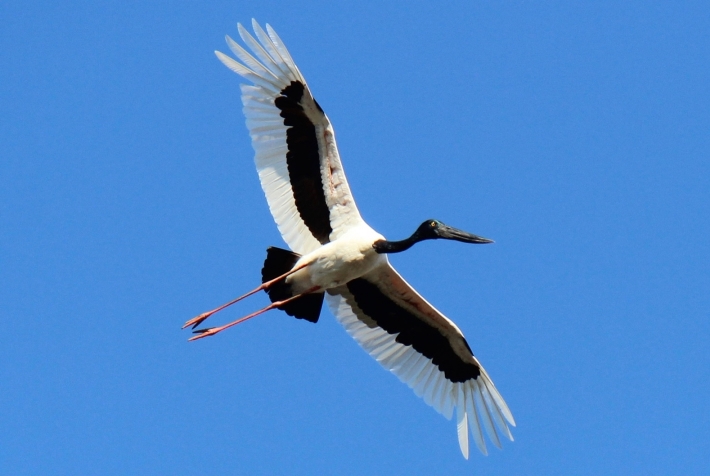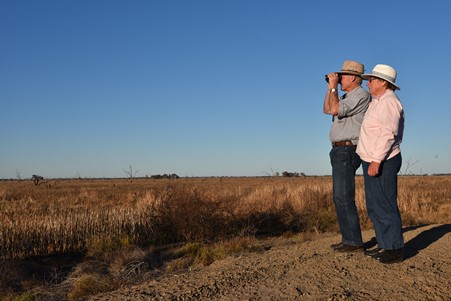


|
|
|
Have you seen our wonderful waterbirds lately?
It's not hard to be amazed by a Magpie Goose, Brolga, Glossy Ibis, Black-necked Stork, Black Swan or Spoonbill. These are just a few of the unique waterbirds to be found in and around our landscape.
 |
Communities mapping waterbirds
If you visit our wetlands, lakes, rivers and waterways you might be lucky enough to see our unique waterbirds. All waterbirds rely heavily on wet areas for their food, habitat and breeding sites. Loss of habitat, lack of water flows and feral animals are serious threats to their long term survival. Log your sightings and help build a picture of how our waterbirds use our local wet places.
Learn more >
|
 |
Get involved
By taking part in this citizen scientist project, you will help understand when and where our wet places are being used by our waterbirds. In so doing, you will also help protect our waterbirds and their habitats from the threats that may see them disappear.
For more information visit the top drop-down menu of this page.
Record your sightings
It is easy to record a sighting on the Waterbird Map (click Start Mapping on the right of this page). Open the Waterbird Map >
|
 |
Bird of the month - Black-necked Stork
This large stork, not to be confused with the ‘Jabiru’, the Brazilian name for a different species which ranges across South and Central America”. It is the only stork species found in Australia, often shy and a resident or a visitor to our local wet places. Single young males move across large areas in search of suitable habitat and mates. To find out more go to this species profile at the top drop down menu.
|

|
Species you might see
Our unique waterbirds like Magpie Goose, Brolga, Glossy Ibis, Black Swan, Black-necked Stork and Spoonbills may all be sighted in and around our rivers and floodplain landscapes. When water is flowing and conditions are right, many waterbirds come from far and wide to feed and nest in our important wetlands. Check out waterbird species profiles at the link below.
Learn more >
|
Project partners and supporters

Citizen Science - Office of Environment and Heritage
There are many ways that you can get involved as a citizen scientist, to help us all learn more about our environment.You’ll work with Office of Environment and Heritage (OEH) staff, participating in scientific research and helping to shape what we know about our natural world. There’s a citizen science project for you, whatever your age or background - Visit Citizen Science OEH website
|

Gwydir Valley Environment Water Advisory Group
More commonly called the Gwydir ECA Committee, this group of local members advise government on the use of environment water through their annual environmental water planning processes. The acronym ECA stands for the Environment Contingency Allowance, which is a 45 Gigalitre water allocation, set aside by NSW water legislation, solely for the environment and held in the upstream Copeton Dam to be called upon as planned. Visit Gwydir website
|

Macquarie Valley Environment Water Advisory Group
The Macquarie-Cudgegong Environmental Water Advisory Group, known locally as the Environmental Flows Reference Group (EFRG), are a collaborative community-government stakeholder group established to advise government (NSW and Commonwealth) on the use of managed environmental water in the regulated Macquarie and Cudgegong Rivers. They use a well developed decision-making process to inform 3-year watering strategies and the preparation of annual environmental water management plans for use by NSW Office of Environment and Heritage and the Commonwealth Environmental Water Office. Visit Macquarie Valley Environment Water Advisory Group website
|
|
|
|
|
|
|
|
|
|
|
|



|